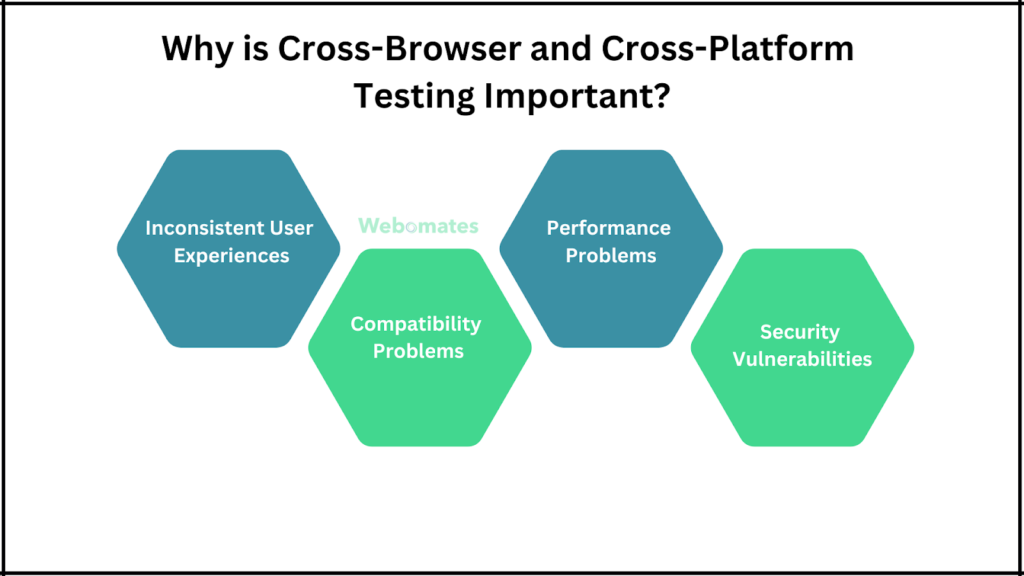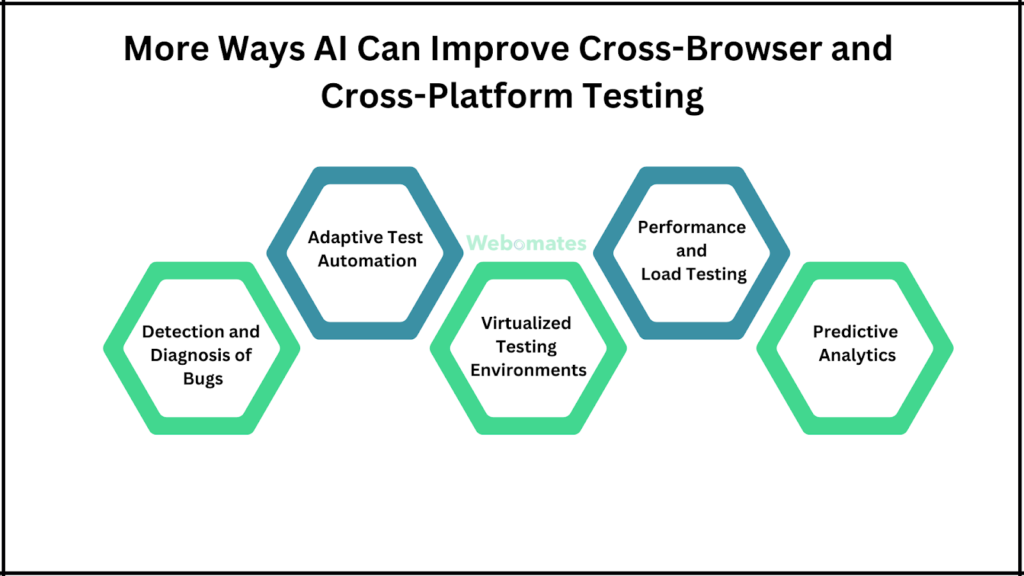Accelerate Success with AI-Powered Test Automation – Smarter, Faster, Flawless
Start free trial“Why does the website crash every time I try to open it on my tablet?”
“Why does this application look so different on my Android as compared to my friend’s iPhone?” “Why doesn’t the checkout button work in Safari, but it works fine in Chrome?”
“Why does this webpage take ages to load up on my browser?”
“Why can’t I access some particular features through the mobile version that are accessible in the desktop version?”
Those are just but a few common complaints of end users who, unless looked into, will eventually whittle away any customer base. It is extremely difficult in this fast software development world to bring an impeccable user experience on the desktop, in different browsers, and across various platforms. Web and mobile applications are increasing by leaps and bounds, while Quality Assurance (QA) teams are finding it hard to keep pace with the demands of cross-browser and cross-platform compatibility. But then, AI is changing the way QA teams go about managing this work. With the help of automation and intelligent analysis, AI-powered testing tools are facilitating the process, making it more precise, and speeding up the developmental life cycle
Visual Summary
Let’s first understand all about cross-browser testing before getting into advanced AI techniques of testing.
What are Cross-Platform and Cross-Browser Testing?
Cross-platform testing ensures that an application functions correctly across different operating systems, like Windows, macOS, iOS, Android, etc., and different devices such as smartphones, tablets, and desktops. This confirms that users experience the same in all devices and operating systems.
Cross-browser testing is mostly based on the web applications tests within the browsers themselves—such as Chrome, Firefox, Safari, and Edge. Most of these browsers interpret codes differently and hence a lot could go wrong in terms of appearance, layout, or even functionality. Cross-browser testing really means that the experience is streamlined from the point of view of a user, regardless of their browser.
Why is Cross-Browser and Cross-Platform Testing Important?
In the first place, the importance of cross-browser and cross-platform testing for software is to ensure that a product attains the widest possible reach without performance or user experience being compromised. A product that works fine on one platform but breaks on another will only serve to alienate potential users. This is critical today, in an environment with strong competition and users who do not hesitate to abandon products if they don’t meet their expectations.
Without in-depth testing, your application or site will be flooded with problems such as the following:

- Inconsistent User Experiences: Different platforms and browsers can interpret code differently, leading to broken layouts, missing features, or misaligned visual elements.
- Compatibility Problems: Incompatibility with certain browsers or platforms would cause a lack of availability to some of your product features or technologies.
- Performance Problems: Bad performance in some browsers or gadgets (slow, high consumption of resources etc.) can annoy users and make them leave your product.
- Security Vulnerabilities: Different platforms have varying security mechanisms; lack of testing could bring those down.
Now let’s consider in detail what kind of challenges QA teams need to solve in order to be cross-browser and cross-platform compatible.
Cross-Browser and Cross-Platform Testing Challenges
- Diversity in Browsers and Platforms: The digital world is filled with enormous variety in browsers, platforms, and devices. QA teams need to take into account multiple combinations of browsers, operating systems, and their versions. For example, your web application should not only run on Chrome, Firefox, Safari, and Edge but should also work on Windows, macOS, Android, and iOS. This kind of diversity alone is enough to overwhelm any team.
- Complex Interactions: Modern web and mobile applications are highly dynamic, full of interactions and animations at every step, and have very complex user flows. Many times, they are handled in different ways by each browser and platform, which creates compatibility issues that need to be thoroughly tested.
- Time and Resource Extensive: Extensive cross-platform and cross-browser testing is too resource-consuming; it demands a heavy investment in terms of time, tools, and man-hours. QA teams are under such pressure to release products fast, at any cost, that they usually compromise the depth of their testing due to a lack of time for it.
With these difficulties in mind, AI is seen as a game changer in streamlining the process, helping QA teams ensure strong software delivery.
How AI Overcomes Challenges in Cross-Browser and Cross-Platform Testing?
- Automating Browser and Platform Diversity: AI tools can mimic the operations carried out on several browsers and platforms at the same time. Automated tools, with AI backing, would run hundreds of test cases across multiple environments simultaneously, thereby knocking down any time that would be used during manual testing by miles. They are also able to apply AI algorithms to render issues and suggest optimizations in code for better performance.
- Continuous Learning: The other reason AI tools make it more effective is due to the fact that they keep in touch with changes that keep happening in browsers and platforms. They constantly monitor new updates and patches so that thye can recognize the potential risk of compatibility issues before they develop into wide problems. This allows QA teams to focus on strategic decision-making, rather than making a constant effort for troubleshooting new updates.
- Time and resource optimization: AI-based automation test frameworks remarkably improve productivity, wiping out the need for repetitive manual testing. With the capability of artificial generation and running of test cases over different environments, AI aids QA teams in hastening the complete process of testing. AI can also rank the importance of specific browser and platform combinations for a team, enabling a team to focus its limited resources on what really matters.
More Ways AI Can Improve Cross-Browser and Cross-Platform Testing

- Detection and Diagnosis of Bugs: AI-based tools compare the expected results with what was actually observed in varying browsers and platforms to pick up patterns that could possibly be anomalies in the test result. So, it can detect and diagnose bugs or compatibility issues at a fast pace.
- Adaptive Test Automation: AI can make testing frameworks adaptive to the changes in the browser and platform environments. This flexibility ensures that QA teams do not have to rewrite the test scripts every time a browser or platform gets updated.
- Virtualized Testing Environments: AI-powered virtual testing platforms provide QA teams with the capability to simulate a vast range of browser-platform-device combinations while doing away with the necessity of physical hardware. Fast, thorough testing can be conducted easily due to this flexibility.
- Performance and Load Testing: AI-based testing frameworks have the ability to calibrate the load scenarios based on real-time data. With AI simulating realistic interaction patterns, it ensures that your application runs robustly on any browser and platform under various conditions of load.
- Predictive Analytics: The fact that AI can analyze data from previous tests and predict possible compatibility issues in future releases explains how QA teams will be prepared to test at vulnerable spots without letting bugs get into production.
Cross Browser Testing with Webomates
Webomates CQ offers robust multi-platform cross-browser testing, utilizing integrations with BrowserStack, Saucelabs, and AWS devices to test your application or website’s visual layouts and designs on real devices. Additionally, we harness the power of crowdsourcing for network testing, ensuring comprehensive coverage across diverse customer networks and service providers.
Our patented codeless engine allows you to convert all functional tests into performance tests with just a click. The same functional tests can be reused for load testing, combining multi-channel functional testing with performance assessments for optimal results.
Our detailed reporting system provides valuable insights to development, testing, and business teams, delivering in-depth analysis of test outcomes. You can learn more about our AI-driven test analysis by visiting our website.
Webomates CQ integrates seamlessly with your CI/CD pipeline, offering flexible scalability to meet varying project demands. We also provide an option to run mini-test suites, significantly reducing effort and saving valuable time.
Accelerate your cross-browser testing process by partnering with us. Schedule a demo today or contact us at info@webomates.com.
Tags: AI for cross browser testing, AI Powered Cross Browser Testing, AI Testing, Automation Testing, Cross browser testing, cross browser testing with ai, Intelligent Test Automation, Software Testing

Leave a Reply